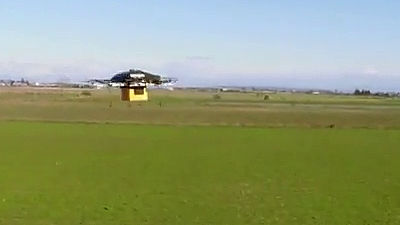DJI update will prevent drones from automatically stopping at airports and wildfire areas, leaving operation to human control

On January 13, 2025, drone manufacturer DJI announced that it had updated
DJI Updates GEO System in US Consumer & Enterprise Drones
https://viewpoints.dji.com/blog/geo-system-update
DJI will no longer stop drones from flying over airports, wildfires, and the White House - The Verge
https://www.theverge.com/2025/1/14/24343928/dji-no-more-geofencing-no-fly-zone
DJI drops geofencing system in US: Drone operators face full risk
https://dronedj.com/2025/01/14/dji-geofencing-no-fly-zone/
Chinese drone maker allows flights over 'restricted zones' in US
https://www.aa.com.tr/en/asia-pacific/chinese-drone-maker-allows-flights-over-restricted-zones-in-us/3449438#
Geofencing is a system developed by DJI that, when enabled, will automatically slow down and hover your drone in place to avoid entering certain no-fly zones, such as near airports or power plants.
DJI has updated its geofencing system to reclassify 'restricted zones' that were previously completely prohibited from entering into 'enhanced warning zones,' and now only warn drone operators attempting to enter these zones. Operators can then choose to continue or abort the flight based on the warning.
This change puts drone operation in the hands of the operator, even at airports, and the operator is ultimately responsible for it. In addition, permission from the FAA is required to fly in enhanced warning zones. The change in the US follows the change in the EU.

In addition, flight restriction areas, including 'enhanced warning areas,' will follow the areas set by local aviation regulatory authorities, such as the European Aviation Safety Agency (EASA) in the EU and the Federal Aviation Administration (FAA) in the US. In the US, areas where dangerous situations or special events such as wildfires have occurred are designated as 'temporary flight restriction areas' and flights are restricted, but it seems that these areas will also only display a warning.
Technology media outlet The Verge has asked DJI a few questions about the changes.
Q: Are we sure that there are no longer any restrictions on drones being able to take off and fly anywhere in the U.S., including military installations, emergency areas like wildfires, and government buildings like the White House?
A: Yes, this update applies to all locations within the U.S. With this update, DJI's geofencing data set has been replaced with official FAA data. Areas previously defined as Restricted Zones will now appear as Enhanced Warning Zones, as designated by the FAA.
Q: Are there any areas that still prevent drones from taking off and flying?
A: No.
Q: Did DJI consult with the U.S. government or any specific government agency, or did it make the decision under direction from elsewhere? If so, which agency?
A: This change is in line with the principle being promoted by aviation regulators around the world, including the FAA, that puts the responsibility for complying with the rules on the pilot.

'We've been working on this for some time now following the successful implementation of the EU changes and have not seen any evidence of increased risk,' said Adam Welsh, DJI's head of global policy.
Brendan Schulman, former vice president of policy at DJI, said of the changes, which essentially relax regulations, 'This is a significant shift in drone safety strategy that could have a significant impact on drone operators, especially those who are less aware of airspace restrictions and high-risk areas.' He emphasized that operators will be required to manage risks more than ever before.
This is a remarkable shift in drone safety strategy with a potentially enormous impact, especially among drone pilots who are less aware of airspace restrictions and high-risk areas. https://t.co/YJOpe2gcZe
— Brendan Schulman (@dronelaws) January 14, 2025
Related Posts:
in Hardware, Posted by log1p_kr







